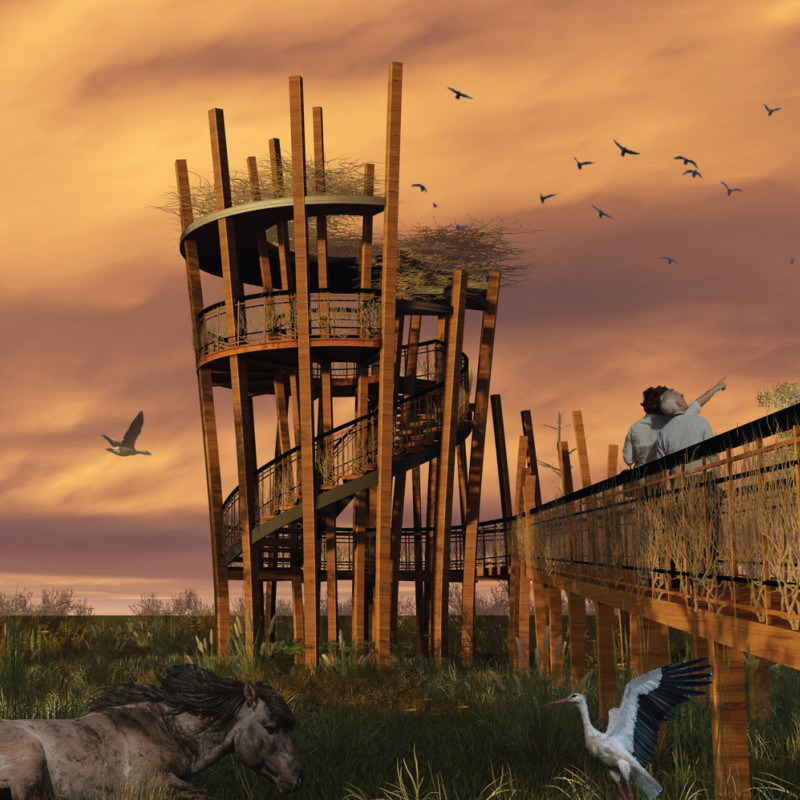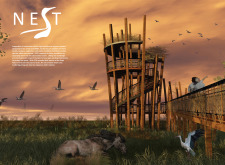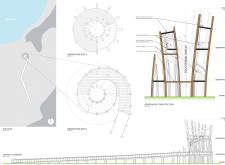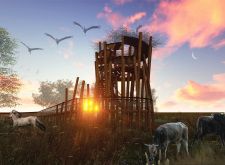5 key facts about this project
The primary function of the project is to serve as a residential space that prioritizes comfort and community interaction while ensuring privacy for its occupants. This duality is achieved through a careful arrangement of spaces that promote social engagement yet provide secluded areas for personal retreat. The layout is intuitively designed, with communal areas such as the living room and kitchen strategically placed to foster interaction, while bedrooms and private spaces are positioned to maximize tranquility.
The architectural approach taken in this project utilizes a material palette that resonates with the surrounding context. Natural materials like wood, stone, and glass are extensively implemented, reflecting both durability and aesthetic warmth. These materials are not only visually appealing but are also selected for their sustainability, aiming to reduce the project’s ecological footprint. The use of energy-efficient glazing techniques ensures that natural light floods the interior spaces, enhancing the sense of openness and connection with the outside environment.
Unique design elements play a crucial role in the project’s identity. One notable feature is the integration of outdoor spaces into the overall design, blurring the lines between indoor and outdoor living. Terraces and balconies extend from the main structure, providing spaces for relaxation and contemplation while offering unobstructed views of the natural landscape. This architectural consideration is more than just an aesthetic decision; it emphasizes the importance of outdoor engagement in improving the quality of life for residents.
Additionally, the project incorporates passive design strategies, such as strategically positioned overhangs and vegetation that contribute to climate control, minimizing reliance on mechanical heating and cooling systems. These elements align with contemporary architectural ideas focused on sustainability and energy efficiency, further establishing the project's relevance in current architectural discussions.
The thoughtful integration of technology within the architecture enhances functionality while maintaining simplicity in design. Smart home features are seamlessly woven into the fabric of the house, allowing residents to manage energy consumption effortlessly. This integration emphasizes a forward-thinking approach while ensuring the design remains user-friendly and grounded.
The project also makes a notable statement about community engagement. By examining the broader geographical and social context, the design encourages community interaction and participation. Open common areas are designed to host gatherings and events, reinforcing the importance of shared experiences among residents and fostering a sense of belonging. This approach to community-focused living is crucial in modern urban environments, where the need for social connection is more pronounced.
In discussing the architectural plans and sections, one can appreciate the meticulous attention to scale and proportion that guides each aspect of the design. These documents provide deeper insights into the architectural decisions made throughout the project, highlighting how each element interacts within the overall composition. The architectural designs reflect a balanced understanding of functionality, aesthetic principles, and environmental considerations, making the project an exemplary model for future developments.
As you explore the project presentation, you will find a wealth of information that illustrates the interplay of architectural ideas, the innovative use of materials, and the thoughtful engagement with the environment. By reviewing the architectural plans, sections, and design specifics, you can gain a more comprehensive understanding of the vision that informs this compelling architectural project.


























